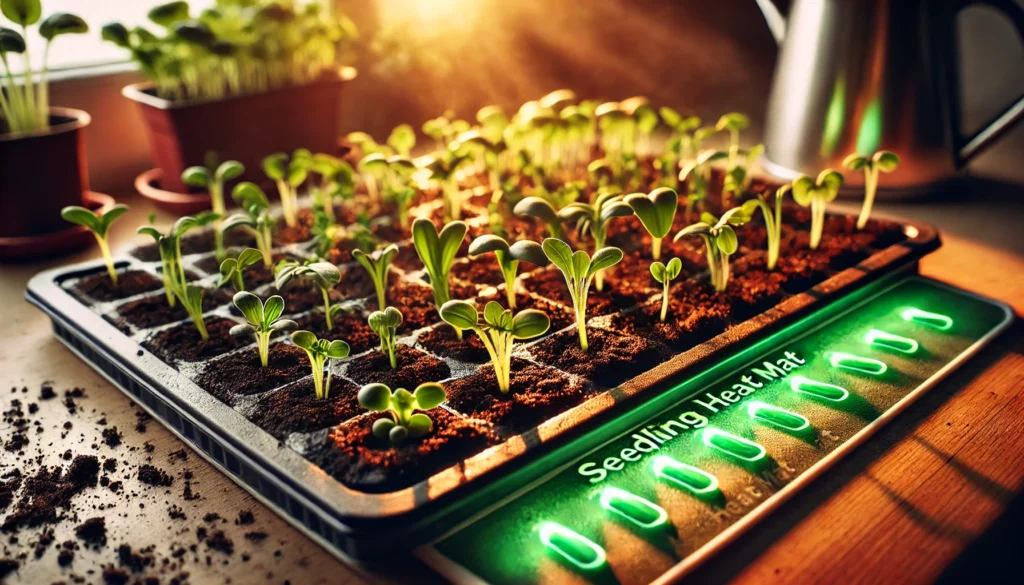
Seedling Heat Mats: Do They Help? Benefits and Tips for Optimal Germination
Starting seeds indoors can be a game-changer for gardeners, but the process isn’t always as simple as it seems. One common challenge is ensuring that seeds get the warmth they need to germinate successfully. Seedling heat mats: do they help? The answer is yes – but only if used correctly. These mats can provide consistent, optimal temperatures that encourage faster, more reliable seedling growth. In this article, we’ll dive into how seedling heat mats work, the benefits they offer, and how you can use them to give your seeds the best possible start. 🌸
Table of Contents
Toggle🌡️ What Are Seedling Heat Mats? 🌡️
Seedling heat mats are essential tools for gardeners, particularly those starting plants indoors. These mats provide consistent warmth to promote seed germination and root development. Typically placed beneath plant trays, they ensure that seeds and seedlings receive the right amount of heat, which is crucial for strong growth. 🌞
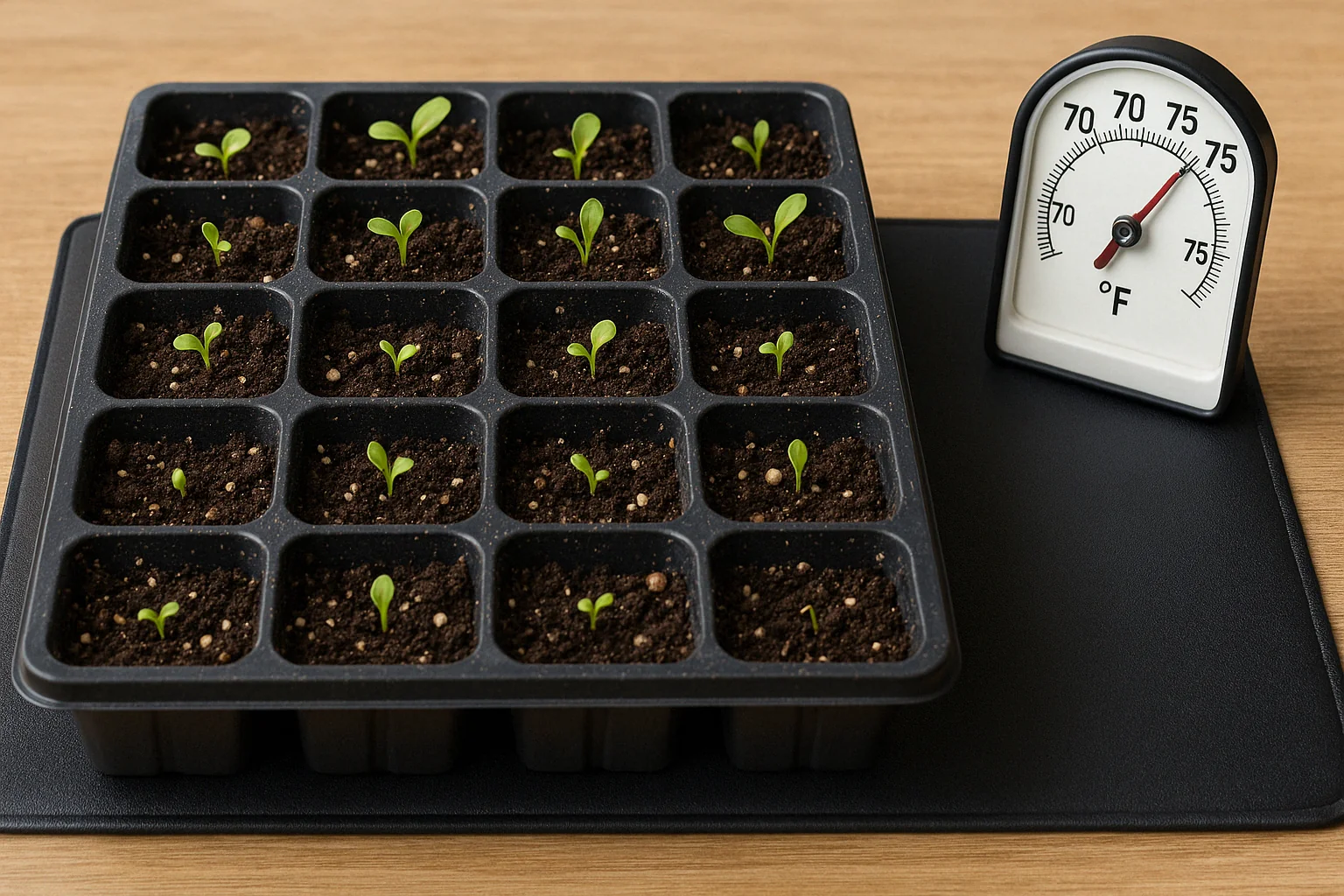
The mats use gentle, even heat to maintain a stable temperature range, typically between 65°F and 75°F, which is ideal for most seeds. By maintaining a warm environment, heat mats help speed up germination, particularly in cooler climates or during colder months when natural warmth is limited. ❄️
A key benefit of using seedling heat mats is their ability to create the perfect microclimate for young plants. This ensures faster sprouting, more vigorous roots, and a higher success rate for your seedlings. Whether you’re starting vegetables, flowers, or herbs, a heat mat offers an easy solution to boost your gardening efforts. 🌻🌱
In summary, seedling heat mats are an invaluable tool for gardeners looking to give their plants the best start by providing consistent warmth and enhancing the germination process. 🌿
🌡️ Why Temperature Matters for Seed Germination 🌡️
Temperature plays a crucial role in seed germination, as it directly influences the metabolic processes that allow seeds to sprout. Every plant species has an optimal temperature range for germination, which can vary depending on the type of seed. 🌾
When the temperature is too low, seed metabolism slows down, leading to delayed or failed germination. Conversely, excessively high temperatures can cause seeds to dry out or burn, preventing them from sprouting altogether. 🔥

For most seeds, the ideal temperature range falls between 65°F to 75°F (18°C to 24°C), but this can vary, so it’s important to research the specific requirements of the seeds you’re working with. 📚
Maintaining the right temperature not only speeds up germination but also helps produce healthier, more vigorous seedlings. Using heat mats or choosing the right time of year to plant can give your seeds the best chance for success. 🌸
By carefully controlling temperature, you can significantly improve the likelihood of successful seed germination, ensuring your plants grow strong and healthy. 🌻
🌱 How Seedling Heat Mats Help 🌱
Seedling heat mats are a game-changer for gardeners looking to boost germination success. These mats gently warm the soil from below, creating the perfect environment for seeds to sprout faster and grow stronger. 🌷
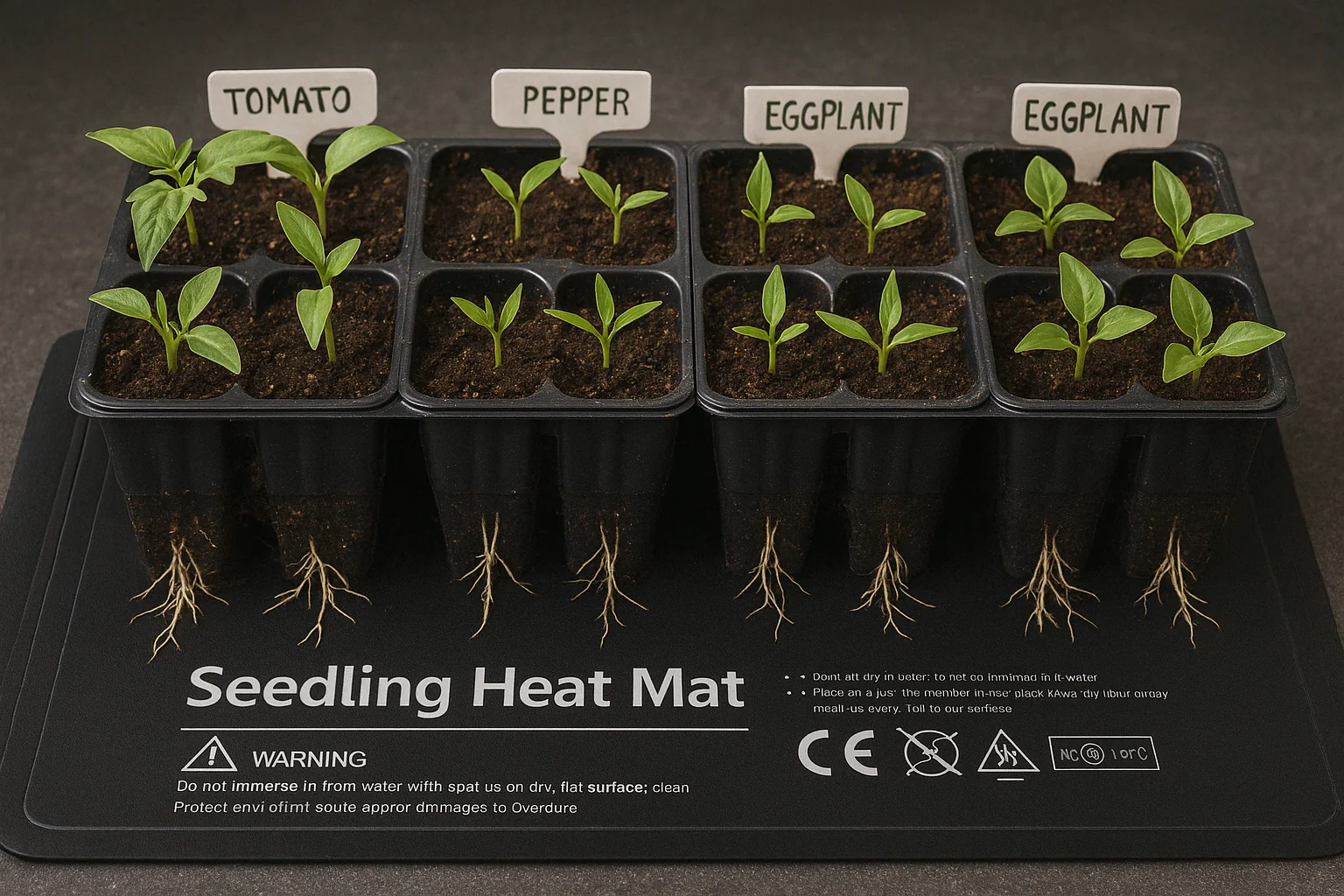
1. 🌡️ Warmer Soil for Faster Germination 🌡️
Most seeds need warmth to break dormancy. Heat mats raise the soil temperature by 10–20°F above room temperature, speeding up germination by several days. This is especially useful for heat-loving crops like tomatoes 🍅, peppers 🌶️, and eggplants 🍆.
2. 🌬️ Consistent Temperature Control 🌬️
Unlike room temperatures that can fluctuate, seedling heat mats provide steady warmth. This stable environment reduces stress on seeds and encourages even sprouting across all trays. 🌿
3. 🏡 Ideal for Indoor Starting 🏡
If you’re starting seeds indoors during cold months, a heat mat simulates spring-like soil conditions. This is crucial when natural warmth is limited, especially in garages, basements, or cooler climates. 🌨️
4. 🌱 Healthier Root Development 🌱
Warm soil encourages roots to develop quickly and deeply. Strong root systems mean stronger seedlings, which leads to healthier transplants once they’re moved outdoors. 🌳
5. 🌿 Better Germination Rates 🌿
Using heat mats often results in higher germination success. Seeds that would normally struggle in cooler conditions can now sprout reliably, saving you time and money on replacements. 💸
6. 🌺 Boost for Delicate or Tropical Plants 🌺
Some plants, like basil 🌿 or okra 🌶️, require extra warmth to germinate well. Heat mats make it possible to grow a wider range of plants indoors with better outcomes. 🌻
Seedling heat mats offer a simple but powerful way to improve seed starting results. They speed up germination, ensure uniform sprouting, and give young plants a healthy start. For serious gardeners, they’re a must-have tool. 🌟
🌱 Benefits of Using Seedling Heat Mats 🌱
Using seedling heat mats can significantly improve your seed-starting success. These mats provide consistent warmth, which encourages faster germination and healthier growth. Here are the top benefits of using seedling heat mats: 🌸
1. ⏳ Faster Germination ⏳
Seeds germinate best in warm soil. Heat mats raise the soil temperature by 10–20°F above room temperature, speeding up the germination process. This means you’ll see sprouts in days instead of weeks. 🌱
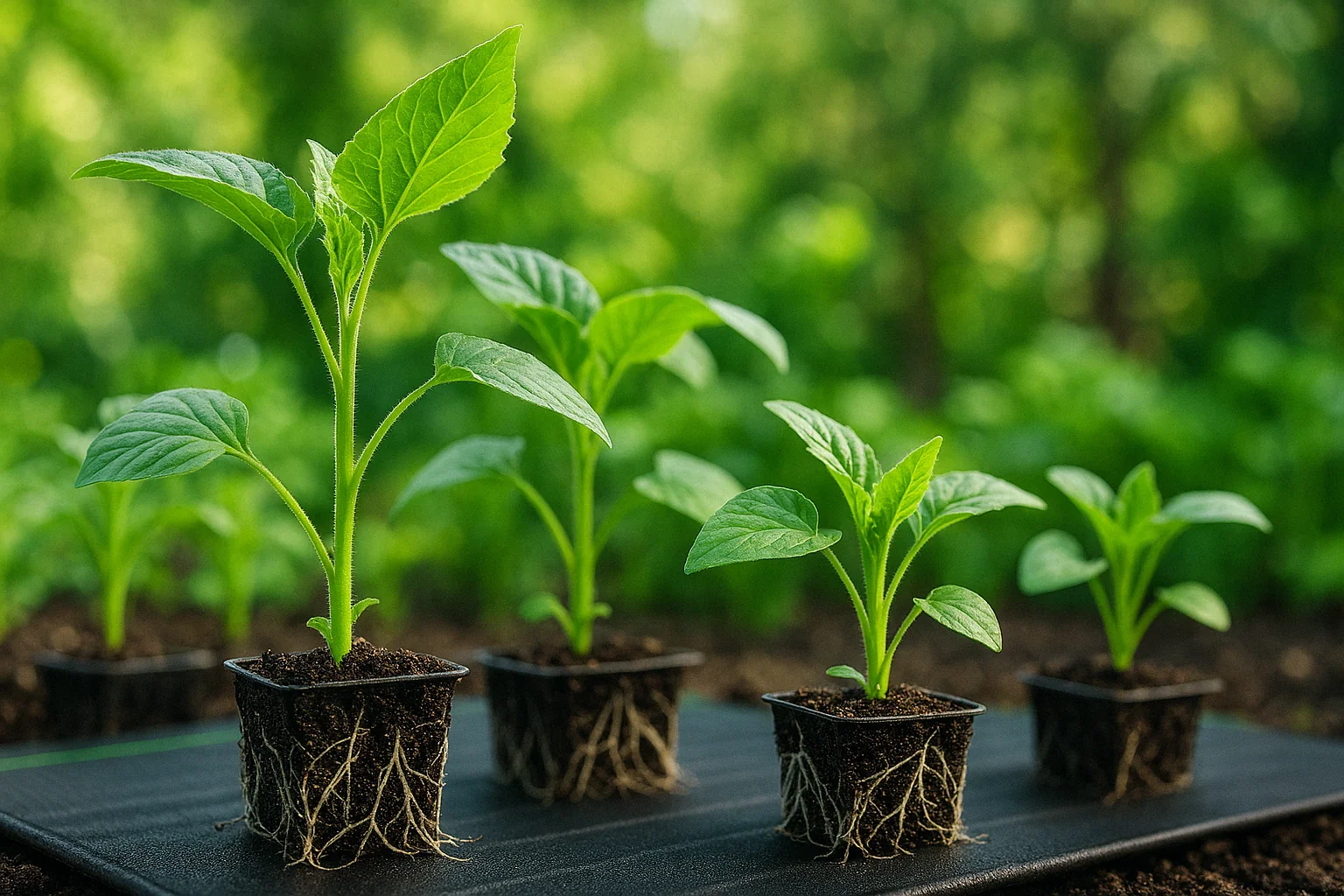
2. 🌿 Improved Germination Rates 🌿
Consistent heat from a seedling heat mat leads to better germination rates. Seeds are more likely to sprout when they’re kept at their ideal temperature range. 🌻
3. 💪 Stronger, Healthier Seedlings 💪
Warm soil encourages strong root development. Healthy roots lead to stronger seedlings that can be transplanted more easily and are better prepared to thrive outdoors. 🌳
4. 🏠 Ideal for Indoor Growing 🏠
Indoor temperatures can fluctuate, especially during winter. A seedling heat mat maintains a stable soil temperature even in cooler environments, giving your seeds the warmth they need. 🌨️
5. 🌞 Supports Heat-Loving Crops 🌞
Some plants—like tomatoes 🍅, peppers 🌶️, and eggplants 🍆—need more warmth to germinate. Heat mats provide the extra heat these crops need to get started successfully. 🌿
6. 🔄 Reusable and Energy-Efficient 🔄
Most seedling heat mats are durable and low on energy use. You can reuse them season after season, making them a cost-effective tool for serious gardeners. 💸
7. 🌱 Works Well with Humidity Domes 🌱
When paired with a humidity dome, a heat mat creates a mini greenhouse. This combo offers the perfect environment for seedlings to sprout and grow strong. 🌻
In short, seedling heat mats give your seeds the warmth they crave, boosting germination and setting the stage for a healthy garden. Whether you’re growing vegetables 🥕 or flowers 🌸, this tool can make a big difference in your seed-starting success. 🌼
🕒 When to Use Seedling Heat Mats 🕒
Seedling heat mats are a game-changer for gardeners, especially when starting seeds indoors. Knowing the right time to use them ensures strong, healthy seedlings and better germination rates. 🌱
1. ❄️ Cold Indoor Temperatures ❄️
Use heat mats when your indoor environment is cool—typically below 70°F (21°C). Many seeds, like tomatoes 🍅, peppers 🌶️, and eggplants 🍆, need warmth (around 75–85°F or 24–29°C) to sprout. Heat mats create a steady, warm soil temperature ideal for germination. 🌞

2. 🌼 Starting Seeds Early in the Season 🌼
If you’re starting seeds in late winter or early spring, when ambient temperatures are low, heat mats help mimic the warmth of spring soil. This gives your plants a head start before transplanting outdoors. 🌷
3. 🌞 Growing Warm-Season Crops 🌞
Heat-loving crops like melons 🍉, squash 🎃, and cucumbers 🥒 benefit greatly from consistent soil warmth. A heat mat boosts early growth and reduces the risk of slow or uneven germination. 🌻
4. ⏳ Speeding Up Germination ⏳
If you want faster results, heat mats can reduce germination time by several days. This is especially useful for slow-germinating seeds or when you’re working with a short growing season. 🏃♂️
5. 🏠 In a Cool Greenhouse or Basement Setup 🏠
Greenhouses or basements can often be chilly. Heat mats help maintain optimal root-zone temperatures even when the air temperature is less than ideal. 🌨️
💡 Tip: Turn Off After Germination 💡
Once seeds sprout, remove the heat mat or reduce its use. Excessive warmth after germination can cause leggy growth or overheating. 🌿
Use seedling heat mats whenever consistent soil warmth is needed for faster, more reliable germination—especially for heat-loving or slow-germinating seeds. They’re a simple tool with big benefits for early-stage plant success. 🌟
🌞 How to Use Seedling Heat Mats for Optimal Germination 🌞
Using seedling heat mats correctly can significantly boost germination rates and speed. These mats provide consistent bottom heat, creating the ideal soil temperature for sprouting seeds—especially for heat-loving plants like tomatoes 🍅, peppers 🌶️, and eggplants 🍆.
1. 🛒 Choose the Right Heat Mat 🛒
Look for a waterproof, UL-listed seedling heat mat designed for indoor use. Pick a size that fits your seed trays or flats. 🌱

2. 🌡️ Use a Thermostat for Precision 🌡️
Pair your heat mat with a thermostat controller to maintain optimal soil temperature. Most vegetable seeds germinate best at 70–85°F (21–29°C). A thermostat prevents overheating, which can damage seeds. 🌞
3. 🛋️ Set Up on a Flat, Safe Surface 🛋️
Place the heat mat on a hard, dry surface like a table or plant bench. Avoid carpets or cushions, which can trap heat and lead to uneven warming. 🌿
4. 🌱 Place Tray on Top of the Mat 🌱
Set your seed tray directly on the mat. Use a humidity dome to retain moisture and heat, speeding up germination. 🌸
5. 🌡️ Monitor Soil Temperature 🌡️
Insert the thermostat’s probe into the soil (not just the air) to get accurate readings. Check temperature daily to ensure it stays within the ideal range for your seeds. 🌞
6. 🧑🌾 Remove Mat After Germination 🧑🌾
Once most seeds sprout, remove the mat or turn it off. Seedlings need cooler temps and good air circulation to prevent legginess and disease. 🌱
7. 💧 Maintain Moisture but Avoid Overwatering 💧
Warm soil dries out faster. Check moisture regularly and water gently when needed. Avoid soggy conditions to prevent root rot or fungal issues. 🌿
🌟 Quick Tip: 🌟
Heat mats are most effective during the germination stage—not during seedling growth. 🌼
Using seedling heat mats the right way helps you grow stronger, healthier plants from the start. It’s a simple tool that makes a big difference, especially in cooler climates or early spring starts. 🌸
🌱 Common Problems and How to Avoid Them 🌱
Even with the best care, plants can run into issues. Here are the most common problems and how to fix or prevent them: 🌿
1. 🍂 Yellowing Leaves 🍂
Cause: Overwatering or poor drainage.
Fix: Check soil moisture before watering. Use well-draining soil and pots with drainage holes. 🌧️
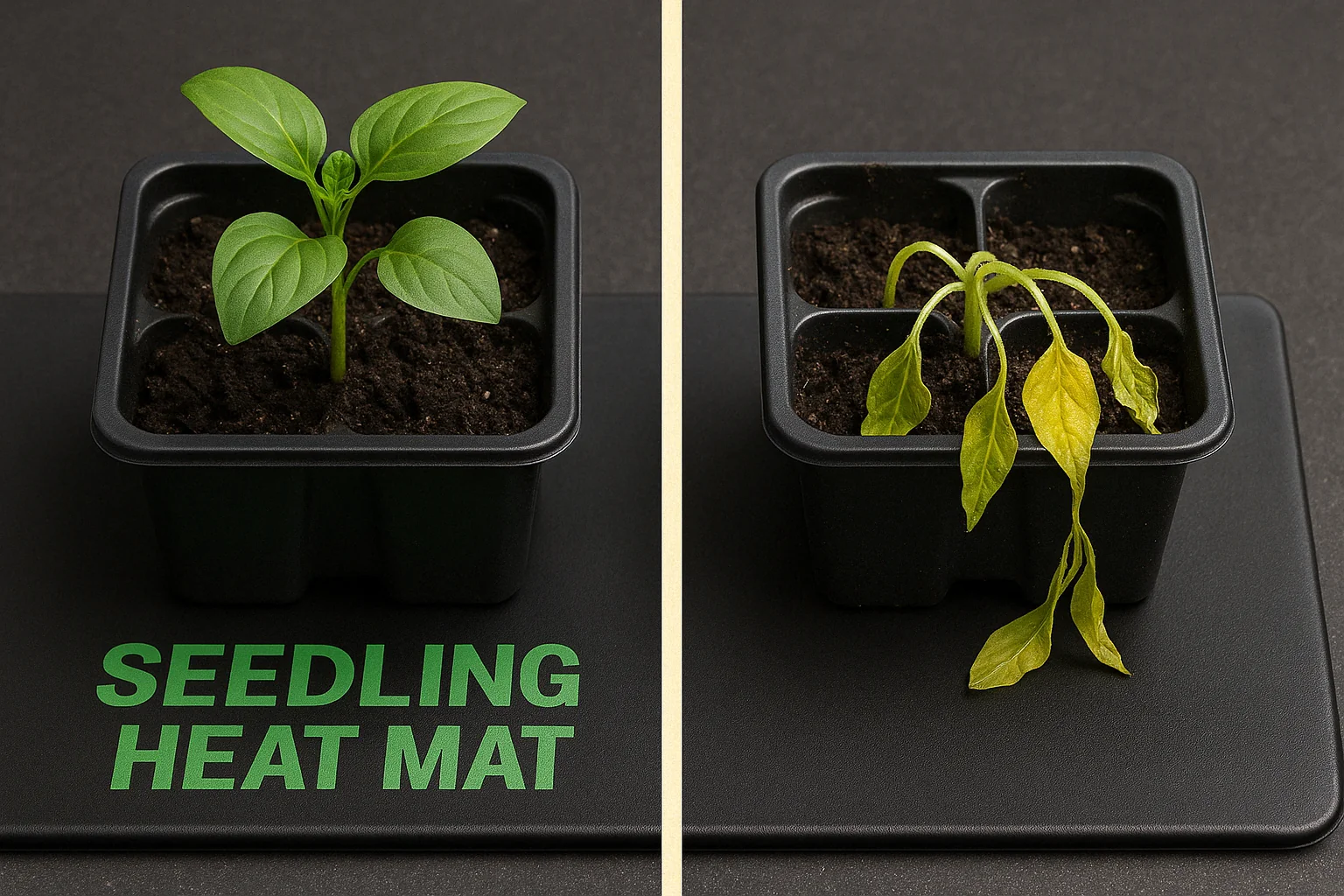
2. 🌾 Wilting or Drooping 🌾
Cause: Underwatering, overwatering, or root rot.
Fix: Feel the soil. If dry, water deeply. If soggy, let it dry out and reduce watering frequency. 💧
3. 🐜 Pest Infestations 🐜
Common Culprits: Aphids, spider mites, mealybugs.
Fix: Wipe leaves with neem oil or insecticidal soap. Inspect weekly to catch pests early. 🌿
4. 🍃 Brown Leaf Tips 🍃
Cause: Low humidity or salt buildup from fertilizer.
Fix: Mist the plant regularly or use a humidity tray. Flush soil with clean water monthly. 💦
5. 🌱 Stunted Growth 🌱
Cause: Lack of light or nutrients.
Fix: Move the plant to a brighter spot and feed with a balanced fertilizer every 4–6 weeks. 🌞
6. 🦠 Fungal Issues or Mold 🦠
Cause: Poor air circulation and excess moisture.
Fix: Space plants out and avoid wetting leaves. Water in the morning so foliage dries quickly. 🌬️
7. 🌿 Leggy Growth 🌿
Cause: Not enough sunlight.
Fix: Provide brighter light or rotate the plant often so all sides get even exposure. 🌞
🌡️ Tips for Maximizing Heat Mat Effectiveness 🌡️
Using a heat mat properly can dramatically boost seed germination and plant growth. Here’s how to get the most out of your heat mat: 🌱
1. 🌡️ Use a Thermostat 🌡️
Always pair your heat mat with a thermostat. It lets you control the soil temperature precisely—preventing overheating and helping maintain the ideal range for germination (typically 70–85°F depending on the plant). 🌞
2. 🌡️ Monitor Soil Temperature 🌡️
Don’t rely on air temperature. Use a soil thermometer to check that the soil stays within the correct range. Too hot or too cold can slow or stop germination. 🌡️
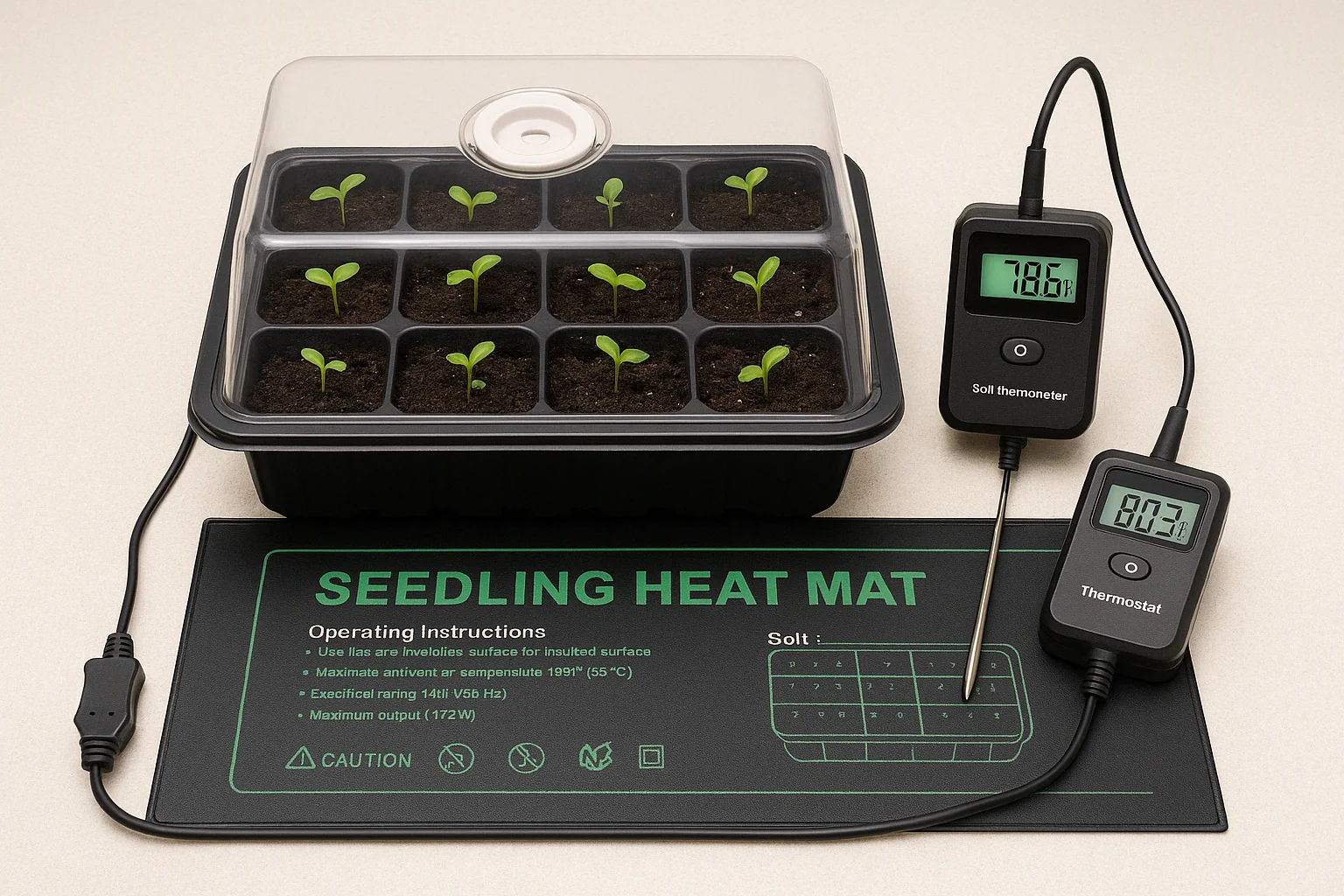
3. 🛋️ Place on a Flat, Insulated Surface 🛋️
Put the heat mat on a solid, flat surface—preferably with insulation underneath (like a foam board). This helps direct more heat upward to the seed tray instead of losing it through the bottom. 💡
4. 🌱 Cover Seed Trays 🌱
Use a humidity dome or plastic wrap to trap moisture and warmth. This creates a mini greenhouse effect that boosts germination speed and keeps seedlings healthy. 🌻
5. ✂️ Remove Heat Mat After Germination ✂️
Once most seeds sprout, remove the mat or turn it off. Young seedlings often prefer slightly cooler temperatures. Continued heat can cause legginess or stress. 🌞
6. 💧 Avoid Overwatering 💧
Heat mats speed up evaporation. Check the soil often and keep it moist—not soggy. Overwatering combined with heat can cause mold or damping-off disease. 🌿
7. 🧩 Choose the Right Size Mat 🧩
Pick a mat that fits your tray. Too small and parts stay cold; too large and you waste energy. Match mat size to the number of trays for consistent warmth. 🔥
8. 🏠 Use Indoors or in Protected Spaces 🏠
Heat mats are not designed to work well in open, cold environments. Use them indoors, in greenhouses, or under grow lights for best results. 🌿
🌟 Final Thought 🌟
Seedling heat mats can be a simple yet powerful tool in your gardening toolkit, especially when it comes to giving your seeds the perfect start. By maintaining consistent warmth, these mats help speed up germination, improve success rates, and ensure more uniform growth. 🌱
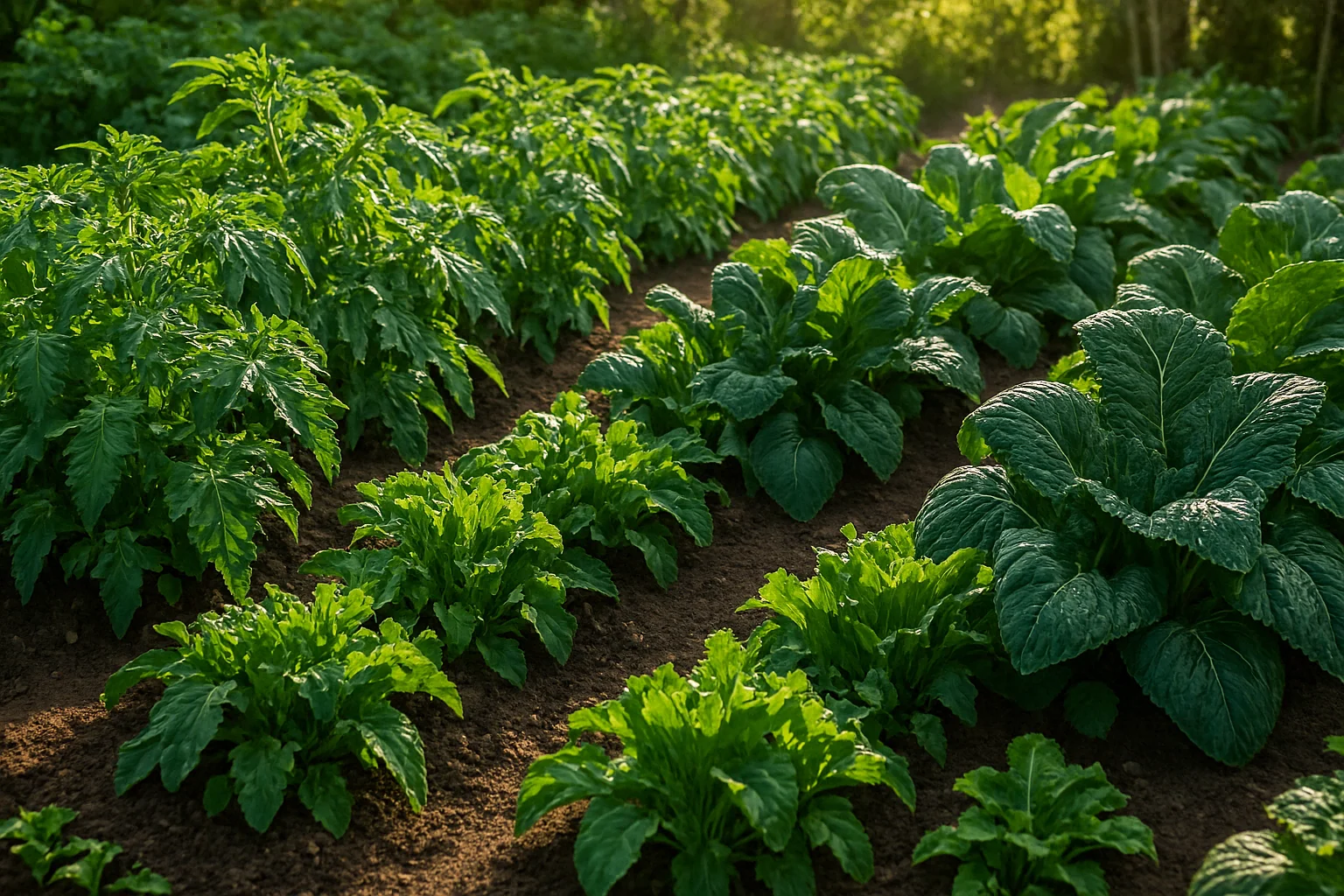
If you’ve ever struggled with slow or spotty seed sprouting, this might be the missing piece in your setup. 🧩 Understanding how and when to use a heat mat is key—too much heat or poor timing can do more harm than good. But with the right approach, your seedlings will thrive from day one. 🌻
So, next time you’re planning your indoor seed-starting routine, consider giving seedling heat mats a try—you might just be amazed at the results. 🌞
Frequently Asked Questions(FAQ)
What are seedling heat mats, and how do they work?
Seedling heat mats are electric heating pads placed under seed trays to gently warm the soil. They create an ideal environment for germination by maintaining consistent soil temperatures.
Can seedling heat mats cause overheating?
Not all seeds require extra heat. Heat mats are most effective for warm-season crops like tomatoes, peppers, and melons. Cool-weather crops like lettuce and spinach may not need them.
Can seedling heat mats cause overheating?
Yes, if not monitored properly. It’s best to use a thermostat with your heat mat to avoid overheating the soil, which can harm seeds and seedlings.
How long should I use a seedling heat mat?
Use the heat mat until seeds germinate. Once seedlings emerge, remove the mat or reduce the temperature to prevent stressing young plants.
Are seedling heat mats worth the investment?
If you’re serious about starting seeds indoors, then yes—seedling heat mats do help improve germination rates and speed. They’re especially helpful in cooler climates or for early starts.
Will a heat mat dry out the soil?
Heat mats can increase evaporation, so it’s important to monitor soil moisture. Keep the soil evenly moist (but not soggy) to support healthy germination and growth.
Do I need a thermostat with my seedling heat mat?
While not strictly necessary, a thermostat helps regulate soil temperature more precisely, which is especially useful for temperature-sensitive seeds.
Can I reuse my seedling heat mat?
Absolutely! With proper care and storage, heat mats can last for many seasons. Just make sure the cords and surfaces remain undamaged and clean after each use.
